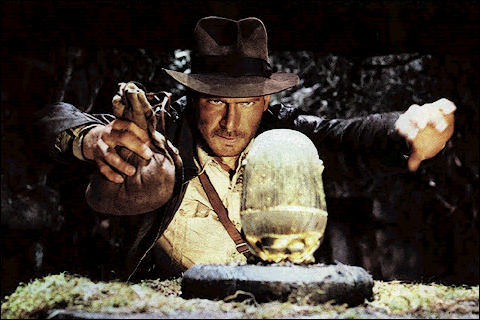How to bowl into the wind
The sun beats down from a cloudless sky as you examine the wicket before play.
It's flat and grassless and looks like slab of baked concrete. Just as you think it can't get any worse you notice one end has a sloping run up and the wind is blowing down the hill.
You already know what the captain is going to say, but your heart sinks when he says it:
Cricket Basic Number 62 (Batting): Get Straight In Line On the Front Foot
62. When batting and playing a shot on your front foot, always play straight. Get your foot as close to the pitch of the ball as possible, point your foot where you want the ball to go and track the ball with the point of your front shoulder. Play straight down the line of the ball. Even if you roll your wrists on contact to place the ball on the leg-side still keep the bat coming through straight.
- Login to post comments
- Feed: Feed for somebasicsofcricket
- Original article
What the Wild West gunslinger can teach you about batting
A Wild West gun fight is just like going out to bat.
Like the gunslinger you stand alone against one man and you only get one chance. It's a psychological battle.
Who will flinch first as the chapel bell chimes midday?
Chances are it's the one who is most in control.
How to exploit batting weaknesses: Choking grip
This is part of a series on How to exploit batsman's weaknesses. To see the other weaknesses click here.
If you are looking for batting weaknesses, it's best not to highlight a technique used by Don Bradman. So just to be awkward, that's exactly what I'm about to do.
The 'choked' or 'O' grip is a common variation of the more orthodox bottom hand grip and, despite the example of the Don, causes problems for batsman at club and school level.
Cricket Basic Number 61 (Batting): Put a Lid On It
61. Wear a helmet, especially in the nets. Top-edges hit more batsmen in the face than fast bowlers. Batsmen even get hit in the head running between wickets by fielders’ throws. You will get used to batting in a helmet, just be patient, concentrate on your batting routine and watch the ball. Aside from protecting your head, wearing a helmet will also increase your courage to play shots like hooks and pulls and give you confidence with last-split-second evasion. Make sure you use a helmet that fits correctly - and do the strap up properly!
- Login to post comments
- Feed: Feed for somebasicsofcricket
- Original article
- Read more
The Indiana Jones guide to better cricket
 Moments after the vehicle has plunged over the sheer cliff, taking Indiana Jones with it there is a dramatic pause and the camera cuts to a close up of the cliff edge.
Moments after the vehicle has plunged over the sheer cliff, taking Indiana Jones with it there is a dramatic pause and the camera cuts to a close up of the cliff edge.
Cricket Show 69: Wil James
| Attachment | Size |
|---|---|
| miCricketCoach - PitchVision miCricketCoach Show 069.mp3 | 21.76 MB |
We delve into the realms of sport psychology this week with the first part of our interview with ECB National Lead Psychologist and consultant for Lane4; Dr. Wil James.
Wil spoke to us on a range of topics related to the psychology of playing/coaching club and school level cricket.
Ask the Readers: What's your perfect batting order?
 How do you pick your batting order?
How do you pick your batting order?Do you flout convention? Do you put giving everybody a go above winning the match? Or vice versa?
There are a number of things to consider:
Cricket Basic Number 60 (Batting): Think Gaps and Singles
60. Push it into the gap. A batsman’s focus should be on placing the ball into the gap and scoring singles. Between balls don’t think, ‘if the next ball is a bad ball here I will hit a four through there’, think ‘if the next ball is a good ball I can defend it down there and get a single’. Hitting boundaries usually takes care of itself if you don't get out.
- Login to post comments
- Feed: Feed for somebasicsofcricket
- Original article
How to exploit batting weaknesses: Open stance
This is part of a series on How to exploit batsman's weaknesses. To see the other weaknesses click here.
On the surface, an open stance is an excellent way to play. It gives the batsman a balanced position from which he or she has a wide range of scoring options.
But it can also lead to their downfall, if you know how to read it properly.

